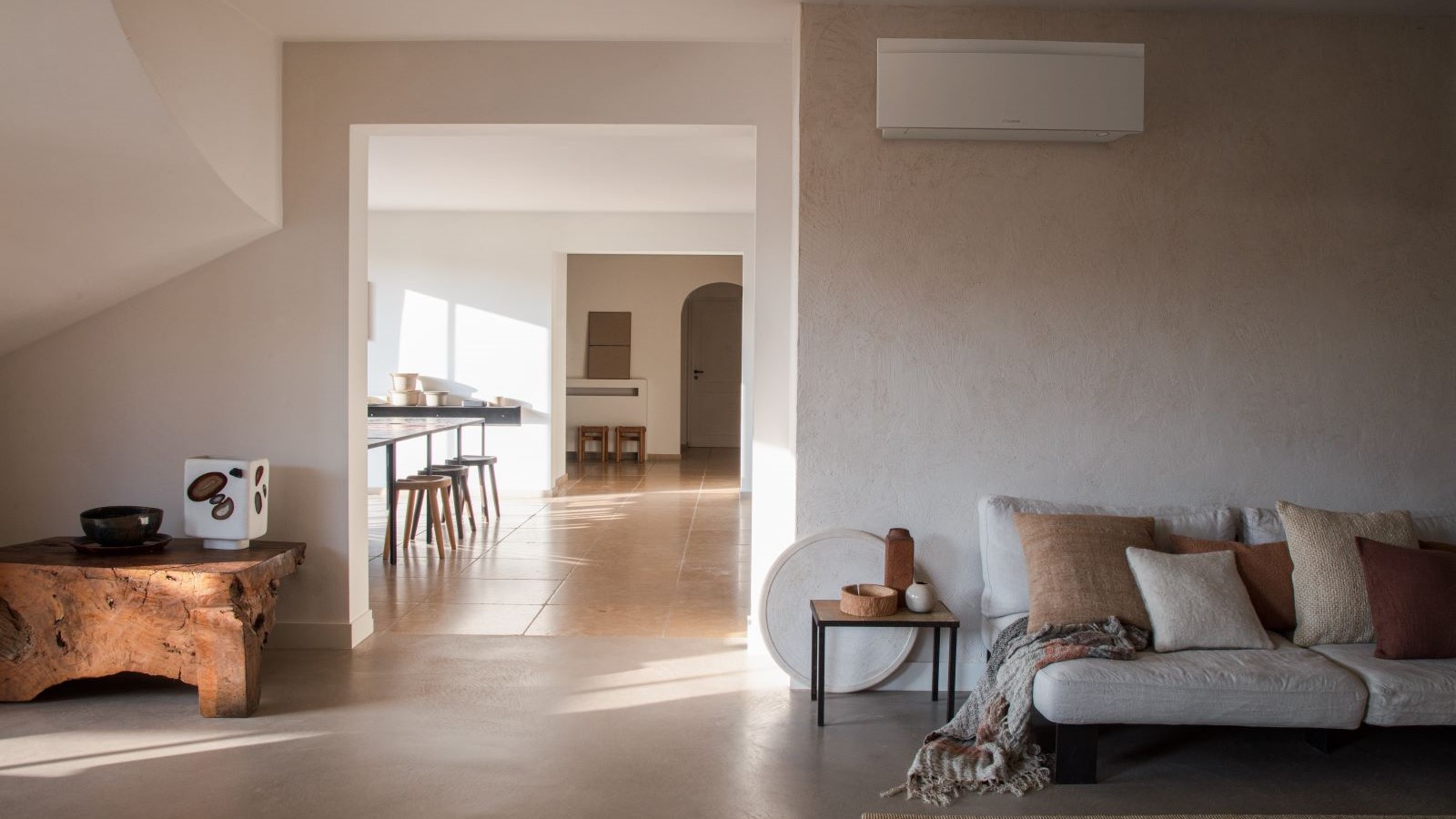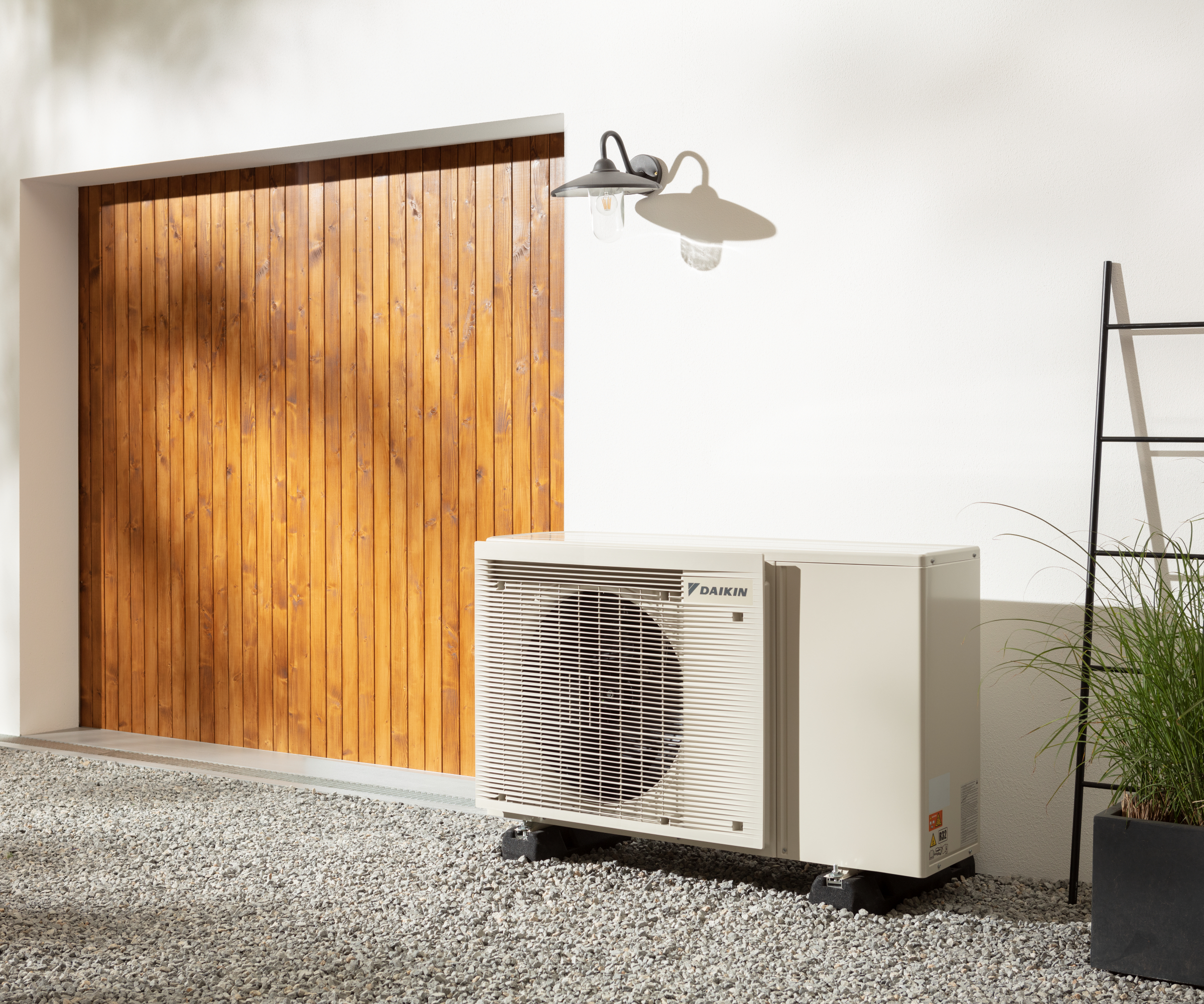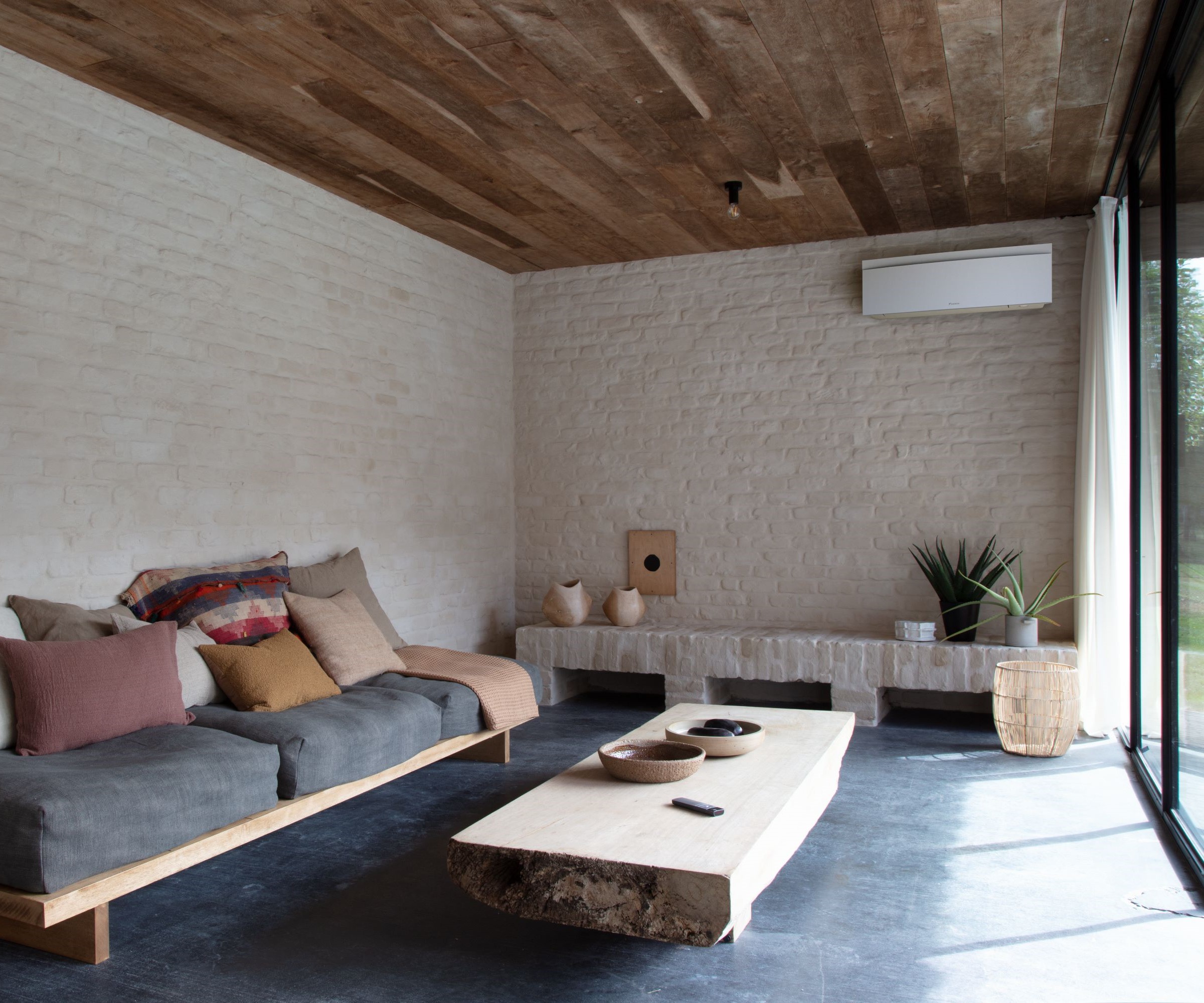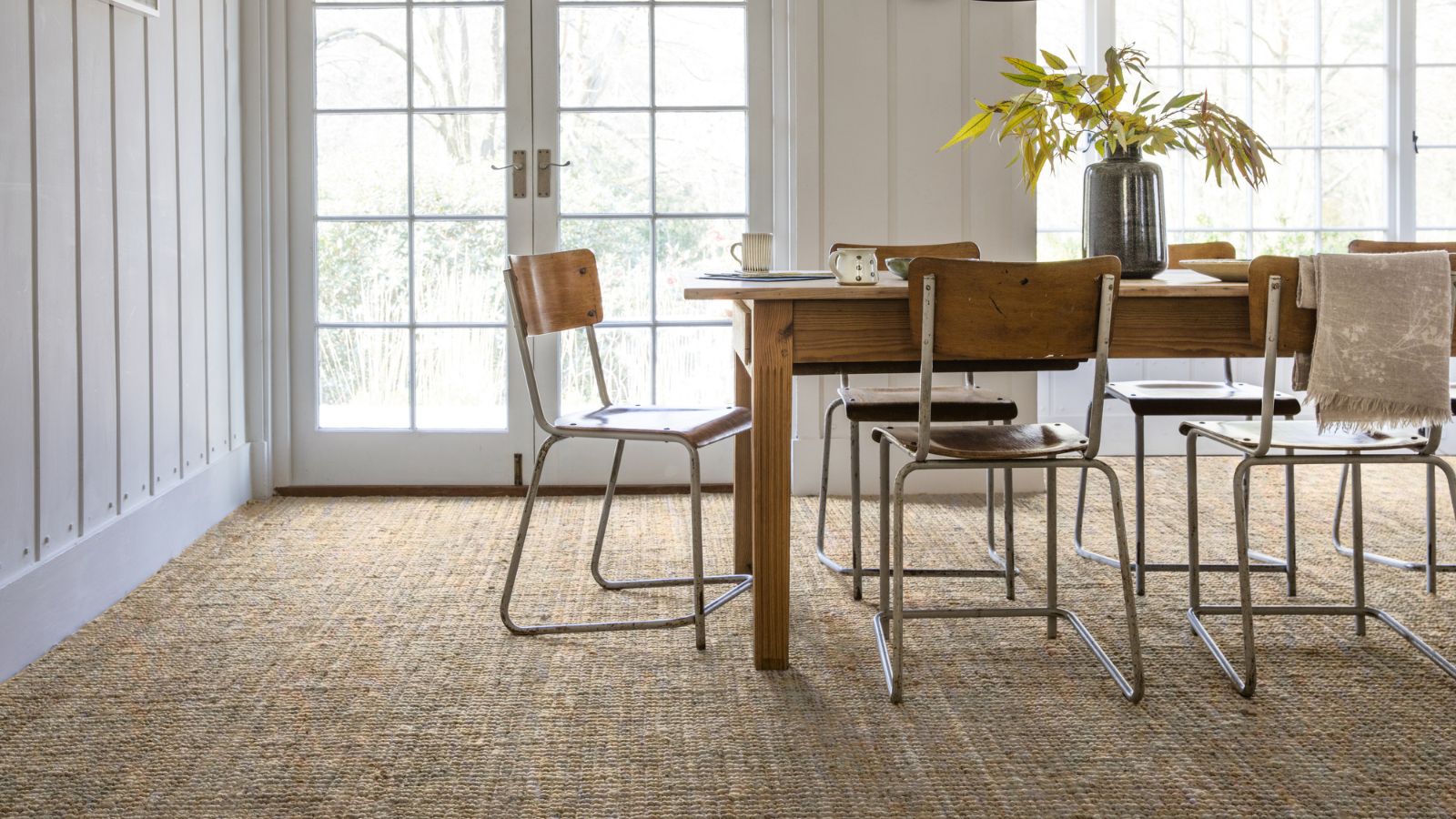What is an air to air heat pump and how does it work?
We look at this type of heat pump, explain how it differs from an air source heat pumps as well as looking at the pros and cons

While an air source heat pump is a popular choice, it isn't the only option when it comes to adding a heat pump to your home.
There are several different types of heat pump available and deciding which one to choose will depend on your home, its location and your family's lifestyle.
Here we take a deep dive into air to air heat pumps, which can not only provide heating but also air conditioning.
What is an air to air heat pump?

Air-to-air heat pumps source heat from the air outside your property and then direct that heat into your home through a number of fan coils called ‘blowers’. This increases the air temperature in the rooms inside your house. They are pretty much the same kind of system as air conditioning units, except that they focus on providing heat, although they can also cool the house down. Furthermore, they only heat the air within the home. They do not heat water.
“Air to air heat pumps operate in a similar way to a fridge," explains Hamid Salimi, residential product manager at Daikin UK. "They absorb energy from the outside air and, by compressing refrigerant, they convert this into a gas. This energy is finally transferred into the air for space heating."
He adds: "Whilst operating in cooling mode, the exact reverse happens, i.e. energy is transferred by the refrigerant from indoor space to the outside. This system is much more efficient than traditional heating systems and relies on electricity."
Air to air heat pumps are not that common in the UK. Where they are used, they tend to be installed in smaller properties, flats and mobile homes in mobile home parks. However, they are used more frequently in mainland Europe, given that they can also be used to provide cooling air, which is often needed in southern European countries where the climate is warmer.
Bring your dream home to life with expert advice, how to guides and design inspiration. Sign up for our newsletter and get two free tickets to a Homebuilding & Renovating Show near you.

Hamid has worked with Daikin for over 13 years in various roles such as product application, HVAC design, and currently as a Product Manager leading a team of product specialists covering all aspects of residential renewable heating. Hamid specialises in and talks about heat pumps, renewables and net zero
How does an air to air heat pump work?
Most heating systems in the UK are called ‘wet’ heating systems because they utilise heated water running into radiators or underfloor heating. Air-to-air heat pumps are different because they do not utilise heated water, instead relying on blowers or air ducts. These are usually mounted high up on a wall, and the air ducts that feed them are mounted inside the ceiling voids so they are not intrusive.
The blowers used by an air-to-air heat pump system are called the ‘head’. This can either be a single head, consisting of a single outside unit and a single blower inside the building, or a multi head, consisting of a single unit outside and multiple blowers inside. Single head systems are generally only used in the smallest homes, or for single room heating. In properties with more than one room, a multi head air-to-air heat pump will be used.
Pipes will be installed to supply heated air from outside to the multi head installation. This is fairly similar to the way pipes are run from a gas boiler to multiple types of radiators. The pipes are usually housed inside a plastic conduit running around the upper edge of each room. The blowers are often only installed on the inside of an exterior wall, and as close to the outside unit as possible in order to reduce the amount of piping required inside the building.
Where ducted systems are used as an alternative, they are sometimes called exhaust air heat pumps (EAHPs), although most EAHPs can also provide hot water. Ducted systems are more common in specifically designed energy efficient housing, such as a Passivhaus. Usually, all that is visible with ducted systems are two grills installed in the ceiling – one of them to bring heated air into the room and another to extract it.
The air sourced from outside is heated in an air handling unit, roughly the same size as a boiler and usually installed in a loft or utility room.
Air to air heat pumps vs air source heat pumps
While an air source heat pump – otherwise known as an air to water heat pump – can both heat and cool a property, thereby effectively replacing a gas boiler, an air to air heat pump takes heat from the air outside the building and moves that heat into the property through a fan system.
There is always some level of noise emanating from an air to air heat pump, as well as a detectable movement of air resulting from the blowers. While lots of people ask are air source heat pumps noisy, the reality is the sound is negligible and outside the home.
“Heat pumps are suitable for nearly every home, " adds Daikin's Hamid Salimi. "However, to optimise their performance, you may need to take a few preparatory steps, such as enhancing your home’s energy efficiency.
"The more energy-efficient your home, the more effective and economical a heat pump will be. Heat pumps are designed to maintain a steady temperature, unlike gas boilers, that provide short bursts of heat.”

Air to air heat pump costs
Air-to-air heat pumps are usually relatively cheap and quick to install, as there is no need for a wet heating system, and therefore no need for radiators. They are also one of the most affordable heat pumps on the market, costing on average between £2,200 and £8,800. The exact cost will depend on the size of your home and your energy consumption.
Installation costs range from £350 to £1,700, depending on how difficult the heat pump is to install. However, compared to other types of heat pump, installation is relatively straightforward, therefore reflected in the cheaper installation cost compared to other heat pumps.
The running costs of the system depend on how it is designed and operated, and what system it is replacing. Unfortunately, there is not much data available in the UK with regards to how these systems perform. This means prediction of the amount of savings possible by installing one is difficult.
FAQs
Does an air to air heat pump work in winter?
Air-to-air heat pumps can’t provide large amounts of heat in the way that boilers and radiators can, which is why they are not suitable for older, or larger properties with a high heat demand.
However, air to air heat pumps will still operate in winter. At outdoor temperatures well below 0°C they can still provide an effective level of heating, even down to temperatures as low as -25°C. This is because air to air heat pumps source heat from atoms and molecules moving through the air, a process that continues in winter ensuring they still generate heat even when the temperature is below freezing.
If you are in the process of choosing a heat pump, or even if you are weighing up the difference in a heat pump vs gas boiler it's important to consider how one will perform with your type of home.
If you are undertaking a self build you can take a fabric first approach and make sure you make your home airtight to stop heat escaping and reduce your energy bills.
However, if you want to install a heat pump in an existing home you may need to assess your home more thoroughly and look at whether you need to make any energy efficiency improvements ahead of adding one.
It's worth taking a look at our piece that looks at: are heat pumps suitable for old homes? as well as our article on is my home suitable for a heat pump?

Robin is a freelance journalist based in the South West of England, UK. He specialises in environmental issues, climate change and renewable energy, with other interests in transport and green motoring. He is a regular daily correspondent for a renewable energy website, writing news articles and interview pieces on all the main clean energy technologies. He has also written widely for numerous magazines on these topics, as well as writing white papers and web content.
- Amy WillisWeb Editor
